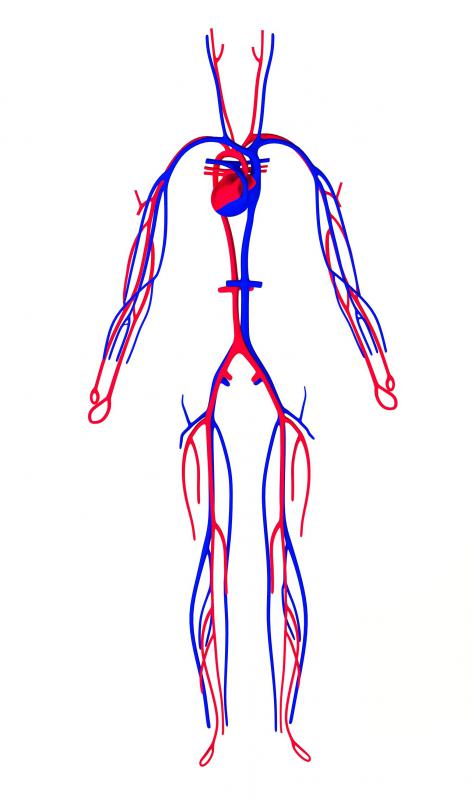At TheHealthBoard, we're committed to delivering accurate, trustworthy information. Our expert-authored content is rigorously fact-checked and sourced from credible authorities. Discover how we uphold the highest standards in providing you with reliable knowledge.
What is the Anterior Vena Cava?
The anterior vena cava is a blood vessel responsible for conducting deoxygenated blood from the upper part of the body to the right atrium of the heart. The heart beats to force the blood through the lungs for oxygenation so it can be returned to circulation to bring fresh oxygen and nutrients to the cells. Disorders involving the anterior vena cava can result in interruptions to the circulation and may make a patient very ill.
This blood vessel forms from the juncture of the two brachiocephalic veins, creating a short, thick vein that descends into the heart. No valves exist between the anterior vena cava and the heart, and the heartbeat tends to cause movement within this blood vessel. Another vessel, the posterior vena cava, carries blood from the lower half of the body to the heart. Both vessels rely on the maintenance of steady blood pressure and the pulsations of the heart to force blood through the body and back up to the heart.

Blood passing through the anterior vena cava has low oxygen levels after circulating through the upper body. After passing through the heart and lungs, it should recover normal oxygenation. Errors with gas exchange in the lungs can cause a decrease in oxygen levels and create health problems. These can include numbness and bluing in the extremities, shortness of breath, and organ damage. Doctors can use oxygen saturation testing to determine if a patient's blood is receiving enough oxygen from the lungs.

One potential disorder involving this vessel is anterior vena cava syndrome. This vessel occurs in an area with a number of other structures in the chest, and they can press on the vessel, causing compression. Sometimes this is the result of anatomical abnormalities and in other cases patients may have tumors or displaced internal structures that cause the pressure. Patients with this condition experience edema, or swelling in the head and neck, because their blood is not circulating properly. They may also develop coughs and hoarseness.

In a patient with a suspected problem involving the anterior vena cava, doctors can request medical imaging of the chest as well as other testing to learn more about the situation. This testing can determine what kinds of interventions may be necessary, including medications, surgery, or lifestyle changes. It is important to provide treatment for the underlying medical problem in addition to symptoms like coughing and edema, to make sure the patient's heart and circulatory system remain healthy and functional.
AS FEATURED ON:
AS FEATURED ON:















Discuss this Article
Post your comments